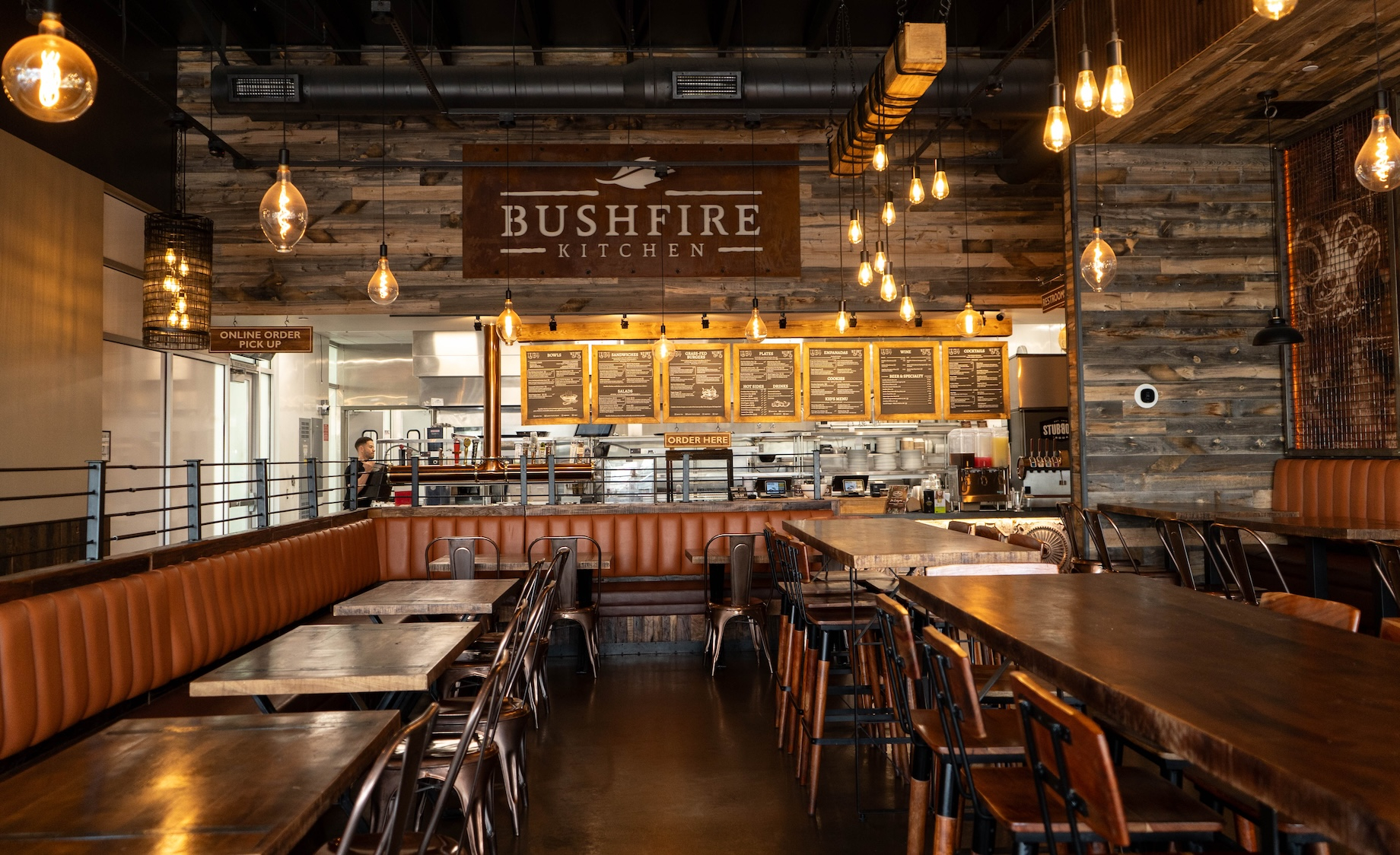In February 2020, Oliver Barwin got a call from his family: His dad was sick, and they needed help running Bushfire Kitchen, their fast-casual restaurant chain known for its globally inspired, health-conscious menu. At the time, Barwin was working in mergers and acquisitions at Barclays in New York City. But “family comes first,” he said. He quit his job and flew to San Diego the next day.
Two weeks later, California shut down indoor dining. While many restaurant owners panicked, Barwin saw an opportunity. “Crisis brings opportunity for change,” he said. Bringing a finance- and technology-driven perspective, he took a hard look at the business. “We overhauled about 80% of our back-end systems, infrastructure and structure,” he said. The changes paid off, as did an investment from CapitalSpring. “We came out of COVID stronger than before,” said Barwin, who now, following his dad’s retirement, serves as CEO of Bushfire Kitchen.
He spoke with ICSC Small Business Center contributing editor Rebecca Meiser about evolving and growing a business.

In 2020, Oliver Barwin left a prosperous job in New York City to come home to San Diego and help lead his family’s restaurant chain, Bushfire Kitchen. Photos above and at top courtesy of Bushfire Kitchen
Wall Street and the restaurant industry seem very different. What were some of the things you brought from finance into the restaurant business?
Wall Street is very numbers and data driven, so the biggest thing was a different approach and putting systems in place that gave me, my team and our operators real-time insights into the business. That completely changed how we spent our time. Before, the team was spending so much time making reports [on things like sales, inventory and staffing levels]. Now, our reports are automated. Instead of just creating reports, we’re able to see what’s happening, draw conclusions and address issues in real time [like restocking low inventory]. And I was able to raise capital from CapitalSpring. We were their smallest investment ever, but they saw something special in the brand and in my vison. [It] allowed us to accelerate our growth far beyond what we could have done alone.
How did your partnership with CapitalSpring change your growth trajectory?
Real estate is such a critical component, and in Southern California, a few big real estate players own most of the top properties. Having institutional capital got landlords to take us more seriously. These guys get so many offers every day, so you have to differentiate yourself and make them feel confident in your credit profile. This partnership allowed us to do that. [Also], CapitalSpring is a restaurant-only investor, so they bring a huge amount of experience to the table. They’re much more than just a funding partner; they help guide our growth. We are at eight [locations] today and expect to be at 11 or 12 by this time next year, with continued expansion throughout Southern California. We’re also looking at potentially expanding out of state in the near future.
Long Beach marks your first Los Angeles location. How did you know it was the right time and place for expansion?
Long Beach made sense geographically. It has seen a lot of growth and density. [The owner], Regency Centers, is doing a beautiful remodel of the mall, Circle Marina Center, and we’re going in alongside strong tenants like Sprouts and Starbucks. The area’s energy and demographics create strong opportunities for our lunch business.

Bushfire Kitchen was designed to be a warm and inviting space where customers can sit and relax. Photo courtesy of Bushfire Kitchen
What makes you different from other healthy fast-food places?
We see ourselves more of an elevated fast-casual concept. The ambience is much nicer and warmer. It’s a place you can sit down and relax. Our menu is broad, with global flavors that resonate with the American palate. A big part of what we do is bring in flavors that are hugely popular around the world but haven’t been as prevalent in the U.S. yet. Chimichurri has been a staple in Argentina forever but wasn’t something you saw on a lot of American menus. It’s been a huge hit. And value — making sure customers get great bang for their buck. One of the downsides of COVID was inflation. A lot of brands raised prices while decreasing portion sizes, and that’s just not a recipe for long-term success. We’ve stayed committed to offering quality and value.
How are you able to keep prices down?
We have an efficient labor model, and that’s a big differentiator for us. We also have strong lunch and dinner service. A lot of our competitors are more lunch focused, which makes labor harder to manage. That balance is a huge advantage. The other is our real estate footprint. Our sweet spot is around 2,000 square feet, significantly smaller than a lot of our competitors. That means we’re paying less in rent. Plus, we have patio seating, so we have a similar number of seats but we’re not paying rent on that space.
The restaurant industry has seen shifts in consumer habits since the pandemic. What trends do you think will define the future of fast-casual dining?
Value and price will always be top of mind. Beyond that, people are more focused on health. We’ve seen a shift toward cleaner, healthier eating, but it has really picked up in the past few years, especially when it comes to protein. You can see that reflected in how other brands are marketing now, putting protein at the center of the plate and emphasizing what’s actually going into your body. That’s a big focus for us, too, and we’ve started leaning into it more in our own marketing. Tied to that is the demand for high-quality ingredients, ethical sourcing and less processed foods. I think that continues for many years, and we’re positioned to capitalize on those trends.